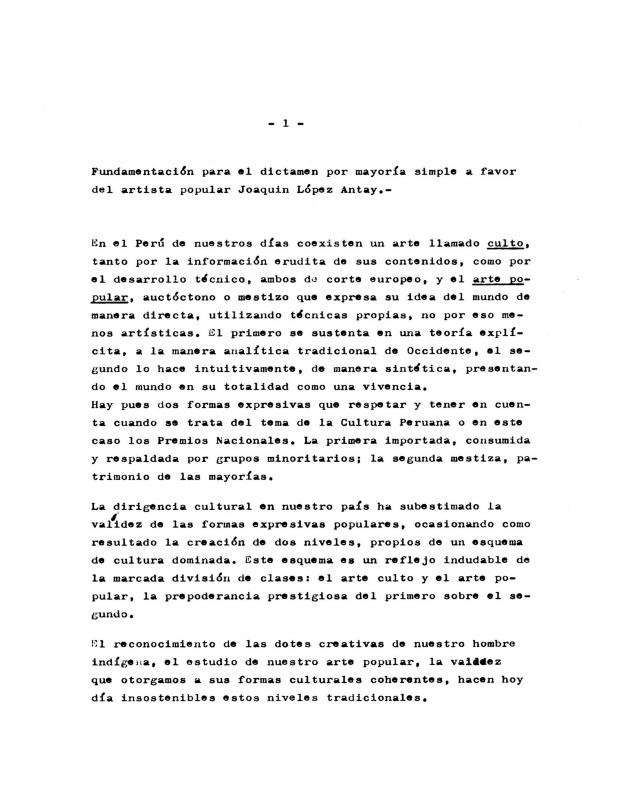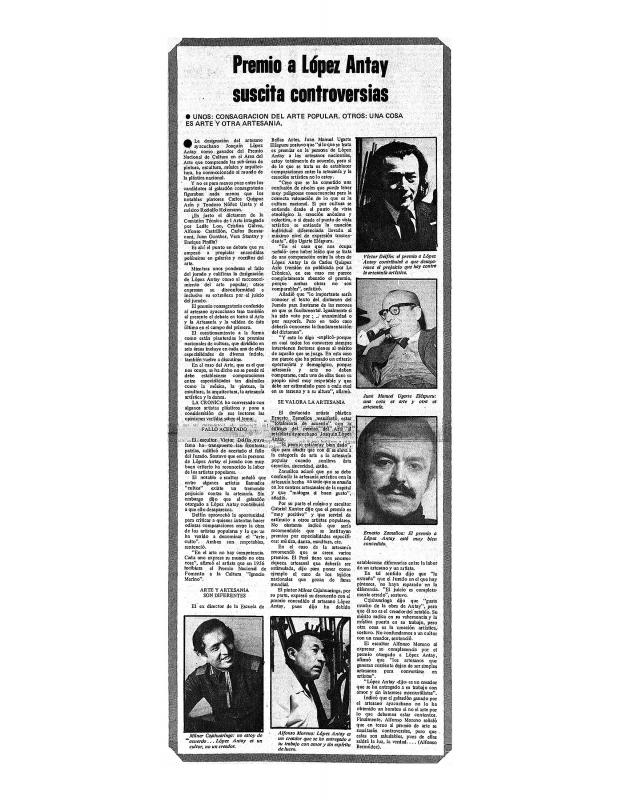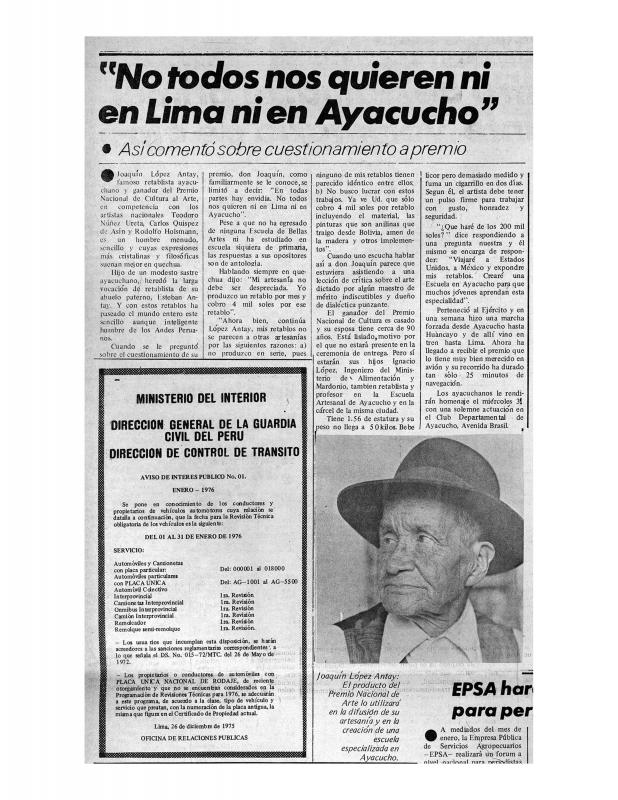In this document the board of directors of the ASPAP (Asociación Peruana de Artistas Plásticos)—led by the painter Francisco Abril de Vivero (1919–2004) and including Luis Cossio Marino (b. 1932), Alberto Dávila (1912–88), Carlos A. Castillo, Miguel Ángel Cuadros, Edith Sachs, and Emiliano Martínez—expresses its wholehearted disagreement with the decision to award the art prize to a traditional, “popular” artist. A heated debate ensued within the association and overflowed into a far broader national discussion. A decade later the member of the jury who was the main advocate of the decision—the art historian Alfonso Castrillón (b. 1935)—identified the communiqué as one of the most representative texts of the debate (“López Antay. Significación actual”. U-tópicos. Entornoalovisual, Año 1, nº 1. Lima: Signo Publicitario, 1982).
An announcement on December 26, 1975 confirmed that the National Culture Prizes (for the 1973–74 biennium) had been awarded by the Peruvian government through the Instituto Nacional de Cultura to honor the greatest contributions to the development of Peruvian culture. The jury’s decision in the art category (which had traditionally included painting, sculpture, music, and architecture) ignited one of the most heated debates in the history of Peruvian art. The ensuing controversy underscored simmering tensions and suspicions regarding the cultural policies of the revolutionary government of the armed forces led by General Juan Velasco Alvarado (1968–75). This administration claimed to be committed to a progressive agenda, a claim supported mainly by the Agrarian Reform of 1969 which was accompanied by the government’s enthusiastic attempt to glorify the image of the peasant population and lifestyle at the expense of other forms of cultural expression that were considered more “Western.” On this occasion the prize was awarded to Joaquín López Antay (1897–1981), who was chosen over well-known visual artists such as Carlos Quízpez Asín (1900–83) and Teodoro Núñez Ureta (1912–88) and the German-born academic musician Rodolfo Holzmann (1910–92).
[Regarding this conflict, see the following articles in the ICAA digital archive: by Alfonso Castrillón, Leslie Lee, and Carlos Bernasconi “Fundamentación para el dictamen por mayoría simple a favor del artista popular Joaquín López Antay” (doc. no. 1135896); by Alfonso Bermúdez “Premio a López Antay suscita controversias. Unos: consagración del arte popular. Otros: una cosa es arte y otra artesanía” (doc. no. 1135879); and (anonymous) “‘No todos nos quieren ni en Lima ni en Ayacucho’: así comentó sobre cuestionamiento a premio” (doc. no. 1135930)].



